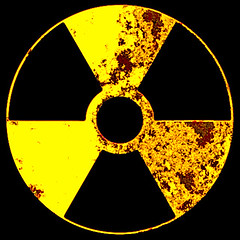
“Can represent a nearly infinite supply of low cost energy – carbon free energy – for the world”
Over the past two months, the U.S. nuclear power industry has seen significant events occur including the first approval for new reactor construction in more than three decades and the Nuclear Regulator Commissions’s release of a new set of orders aimed at increasing plant safety post-Fukushima. Both appear to signal that the U.S. federal government is ready to support some degree of growth in the industry. But, it is still unclear how much support there is for innovation in this field, especially when it comes to moving ideas off the lab bench.
In their February 9, 2012 vote, the U.S. Nuclear Regulatory Commission (NRC) approved the addition of two new reactors at Georgia’s Plant Vogtle Plant. Jointly owned by Georgia Power, Oglethorope Power Corporation, Municipal Authority of Georgia, and Dalton Utilities, this plant originally came online in 1987 and currently runs with two Westinghouse pressurized water reactors (PWRs).
The NRC’s February vote approved the addition of two Advanced Passive 1000 (AP1000) reactors in Plant Vogtle. Like their 1980s counterparts, these pressurized water reactors will be built by Westinghouse. But, they will be the first of their kind in the United States . In fact, the 3rd generation AP1000 design was only added to the NRC’s approved list in December (the original design was approved in 2006).
On the other hand, outside of the United States, the 3rd generation AP1000 design is expected to “account for close to 60 percent of China’s future projects,” according to Dave Dai, a Hong Kong-based analyst at Daiwa Securities Capital Markets Company. Already, the Chinese government is planning to build at least 60 reactors by 2020, with four already under construction. The country is already running 11 nuclear power generating units with 2nd generation AP1000 technology.
This relatively slow rate of acceptance of new nuclear technology in the United States compared to other countries is not only seen in the deployment stage. New innovations in reactor design are treated with a skeptical eye as concerns regarding safety butt heads with discussions regarding the impact of power sector greenhouse gas emissions and climate change. And, while caution is certainly appropriate when dealing with a technology that could pose significant threat to human health and safety, just how cautious one should be is less clear.
For example, take a look at the Bellvue, WA-based startup TerraPower and its traveling wave reactor.
TerraPower is a unique venture – one of the only privately funded research companies in the U.S. nuclear industry. And, its technology is also a step apart. Instead of focusing on making incremental improvements to existing reactor designs, this company’s traveling wave reactor would shift the type of uranium used to generate electricity in nuclear power plants. In fact, this technology might be able to take existing nuclear waste and turn it into fuel that could allow these plans to run for decades without needing to shutdown to refuel.
via Scientific American – Melissa C. Lottᔥ
Bookmark this page for “Nuclear Energy Innovation” and check back regularly as these articles update on a very frequent basis. The view is set to “news”. Try clicking on “video” and “2” for more articles.








